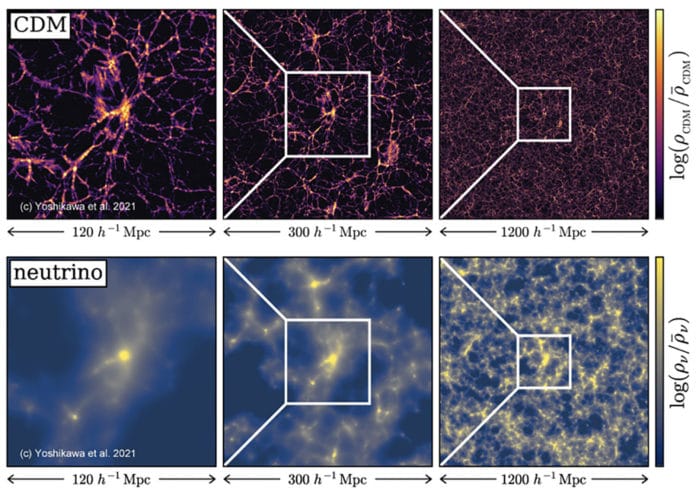The mass of neutrinos remains elusive. Determining the mass of neutrinos could help scientists develop theories beyond the standard particle physics model. It could also help them test explanations for universe evolution.
One possible way to determine this mass includes studying the impact of cosmic relic neutrinos on large-scale structure formation. Scientists need to use simulations and compare the results with observations to do so. But these simulations need to be highly accurate.
Standard simulations use techniques known as particle-based N-body methods. The methods have drawbacks when it comes to massive neutrinos. Those drawbacks are as follows:
The simulation results are susceptible to random fluctuations called shot noise.
These particle-based methods cannot accurately reproduce collisionless damping—a critical process in which fast-moving neutrinos suppress the growth of structure in the Universe.
In a new study, a research team from Japan has devised an approach that solves this problem. Scientists reported about the simulations that precisely follow the dynamics of such cosmic relic neutrinos.
The research team includes scientists from the University of Tsukuba, Kyoto University, and the University of Tokyo.
Scientists avoided the abovementioned drawbacks by following the dynamics of the massive neutrinos. They directly solved a central equation in plasma physics known as the Vlasov equation.
Unlike previous studies, they solved this equation in full six-dimensional phase space. This means they considered all six dimensions associated with space and velocity.
Scientists then coupled this Vlasov simulation with a particle-based N-body simulation of cold dark matter. They performed their hybrid simulations on the supercomputer Fugaku at the RIKEN Center for Computational Science.
The lead author of the study, Professor Koji Yoshikawa, said, “Our largest simulation self-consistently combines the Vlasov simulation on 400 trillion grids with 330 billion-body calculations, and it accurately reproduces the complex dynamics of cosmic neutrinos. Moreover, the time-to-solution for our simulation is substantially shorter than that for the largest N-body simulations, and the performance scales extremely well with up to 147,456 nodes (7 million CPU cores) on Fugaku.”
Along with determining neutrino’s mass, this study could be used to study, for example, phenomena involving electrostatic and magnetized plasma and self-gravitating systems.
Journal Reference:
- Kohji Yoshikawa, Satoshi Tanaka, Naoki Yoshida. A 400 trillion-grid Vlasov simulation on Fugaku supercomputer: large-scale distribution of cosmic relic neutrinos in six-dimensional phase space. DOI: 10.1145/3458817.3487401
